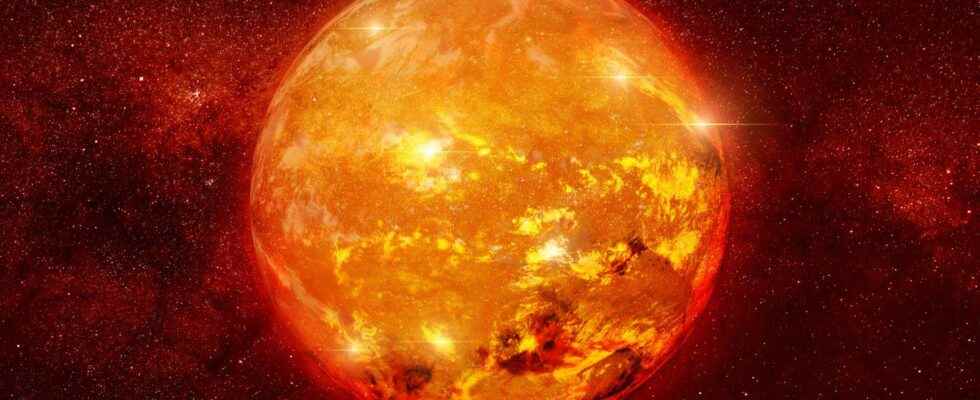The size of some stars in the universe is impressive compared to the modest size of the Sun. The mass of other stars is also astonishing (a large star is not necessarily very massive and vice versa). Here are the most remarkable cases known to astronomers.
You will also be interested
[EN VIDÉO] Amateur astronomers take part in the space adventure Amateur astronomers are numerous and increasingly better equipped. This is why space agencies are calling on them more and more for observation or measurement work, as we can see during this video from CNES.
There are so manystars in L’universe that it is impossible to know them all. Moreover, we do not even know how many there are exactly in our galaxy. For the astronomers, it is rather a question of evaluating their mass by taking as reference that of the Sun: 1.98892 x 1030 kg, 333,000 times that of Earth or 1,048 times that of Jupiter. For example, the Milky Way has an estimated mass of about 240 billion times that of the Sun.
Of type yellow dwarf, the Sun is a star relatively modest in size. Its diameter is 1.392 million kilometers, or 109 times that of the Earth. It would take about 1.3 million planets similar to ours to completely fill it. Finally, note that our star alone represents 99.86% of the total mass of the Solar System.
In terms of stars, there are therefore two kinds of colossi: giants and massive.
VY Canis Majoris or UY Scuti: which is the biggest star?
Not so long ago, it was VY Canis Majoris who held the record. The size of this star, located in our Galaxy, about 5,000 light years of the Earth, in the direction of the constellation of the Grand Dog, has been revised downwards: between 1,420 and 1,540 times that of the Sun, which is still nearly 2 billion km in diameter, 13 times the distance between the Earth and the Sun.
VY Canis Majoris was dethroned by another red supergiant : UY Scuti (9,500 light years away in the constellation Sobieski’s Ecu); 1,700 times larger than the Sun, it could extend to Saturn if we put it at the center of the Solar System!
Mu Cephei or Erakis, “the Garnet Star”
About 1,200 times larger than the Sun, Mu Cephei or Erakis – nicknamed “the Garnet Star” by William Herschel – is famous for being visible in this color and without an instrument, within the constellation Cepheus, some 5,200 light years away.
In all cases, their disproportionate size is synonymous with decline. Their color testifies to their cooling surface.
https://www.youtube.com/watch?v=EDNEV9EW06g
This video presents celestial bodies from the smallest (planets), to the largest (different known stars). When this animation was produced, VY Canis Majoris and UY Scuti were not yet spotted. © cycomedia.net, YouTube
Eta Carinae and the stars of cluster R136, very massive stars
Although smaller, very massive stars impress with their ardor and vigor. One of the most famous extreme cases in our Galaxy is that ofEta Carinae, 7,500 light years from Earth; 120 times more massive than the Sun for 250 times its size, this star is a million times brighter than our star. She was arguably even more massive in her youth, but as she got older she kept losing weight: around 500 earth masses per year. It is not far from exploding now, which promises an extraordinary celestial spectacle in the relatively near future.
More colossal still are those which appear in the cluster R136, within the tarantula nebula in the dwarf galaxy of Large Magellanic Cloud, about 170,000 light years from Earth. Nine of these young stars have a mass 100 times that of the Sun. Together, they are 30 million times brighter than the latter! With 250 times the mass of the Sun, R136a1 is by far the most massive star known. Currently, it shines as bright as 10 million suns! Astronomers wonder about the processes that could have generated such gigantism, because the theoretical limits are 150 solar masses.
Interested in what you just read?
.
fs4
